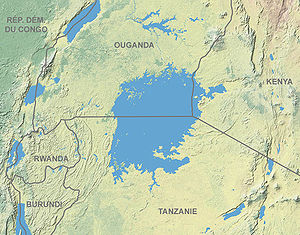Mount Elgon National Park
| Mount Elgon National Park | |
|---|---|
|
IUCN category II (national park)
|
|
| Location |
|
| Nearest city | Mbale |
| Coordinates | 01°08′00″N 34°35′00″E / 1.13333°N 34.58333°ECoordinates: 01°08′00″N 34°35′00″E / 1.13333°N 34.58333°E |
| Area | 1,279 km2 (494 sq mi) (total) |
| Established | Kenya: 1968, Uganda: 1992 |
| Governing body | Kenya Wildlife Service, Uganda Wildlife Authority |
Mount Elgon National Park is a national park 140 kilometres (87 mi) northeast of Lake Victoria. The park covers an area of 1,279 square kilometres (494 sq mi) and is bisected by the border of Kenya and Uganda. The Ugandan part of the park covers 1,110 square kilometres (430 sq mi) while the Kenyan part covers 169 square kilometres (65 sq mi). The Kenyan part of the park was gazetted in 1968, the Ugandan part in 1992.
The park is named after Mount Elgon, an extinct shield volcano on the border of Uganda and Kenya.
Mount Elgon National Park is uniquely split down the middle by the Kenyan-Ugandan border. Mount Elgon is an important water catchment for the Nzoia River, which flows to Lake Victoria, and for the Turkwel River (known as the Suam River in Uganda), which flows into Lake Turkana.
The climate is moist to moderate dry. Annual rainfall is over 1,270 millimetres (50 in). The dry seasons run from June to August and from December to March, although it can rain at any time.
Elgon's slopes support a rich variety of vegetation ranging from montane forest to high open moorland studded with the giant lobelia and groundsel plants. The vegetation varies with altitude. The mountain slopes are covered with olive Olea hochstetteri and Aningueria adolfi-friedericii wet montane forest. At higher altitudes, this changes to olive and Podocarpus gracilior forest, and then a Podocarpus and bamboo Arundinaria alpina zone. Higher still is a Hagenia abyssinica zone and then moorland with heaths Erica arborea and Philippia trimera, tussock grasses such as Agrostis gracilifolia and Festuca pilgeri, herbs such as Alchemilla, Helichrysum, Lobelia, and the giant groundsels Senecio barbatipes and Senecio elgonensis.
The botanical diversity of the park includes giant podocarpus, juniper and Elgon olive trees cedar Juniperus procera, pillarwood Cassipourea malosana, elder Sambucus adnata, pure stands of Podocarpus gracilior and many orchids.
Of the 400 species recorded for the area the following are of particular note as they only occur in high altitude broad-leaf montane forest: Ardisiandra wettsteinii, Carduus afromontanus, Echinops hoehnelii, Ranunculus keniensis (previously thought endemic to Mount Kenya), and Romulea keniensis.
...
Wikipedia


